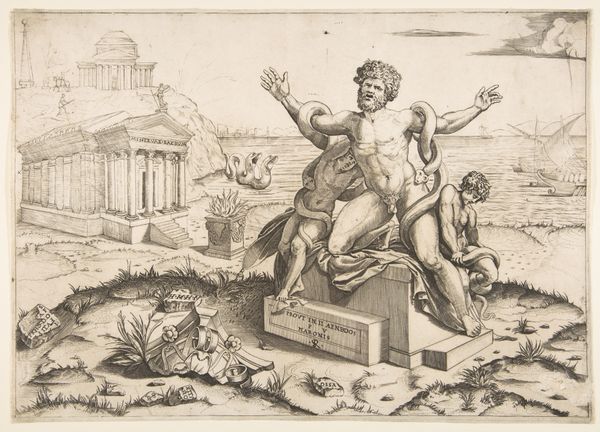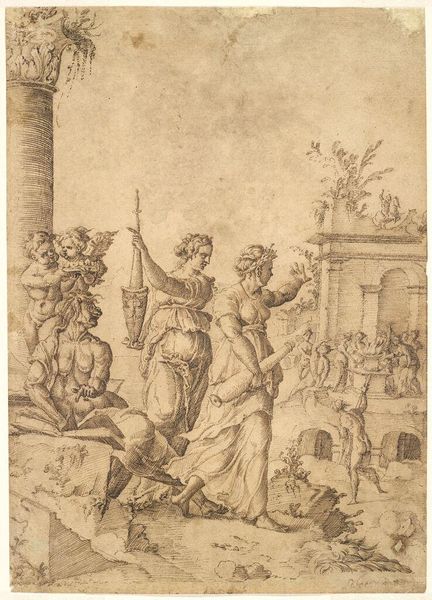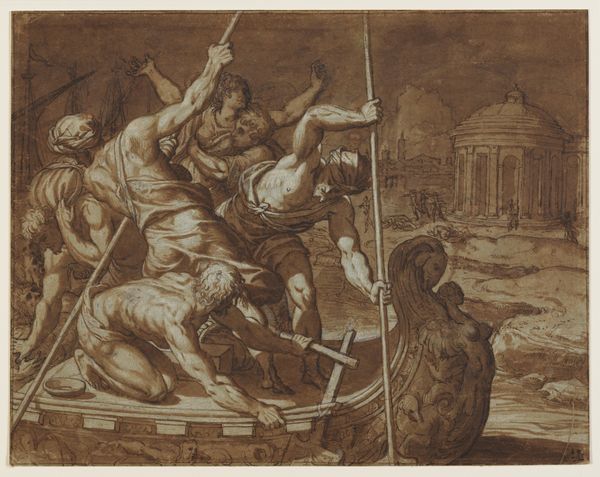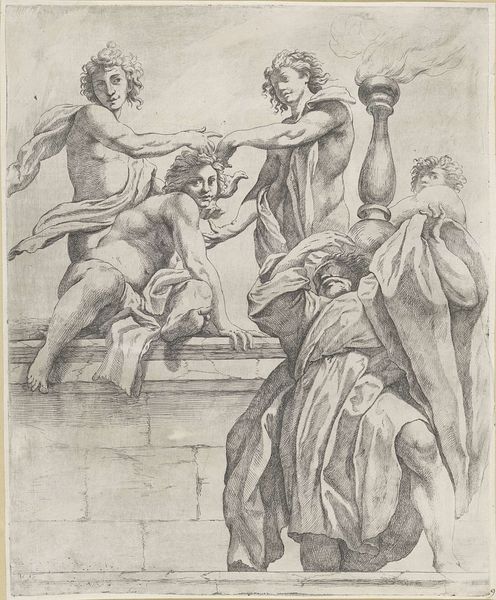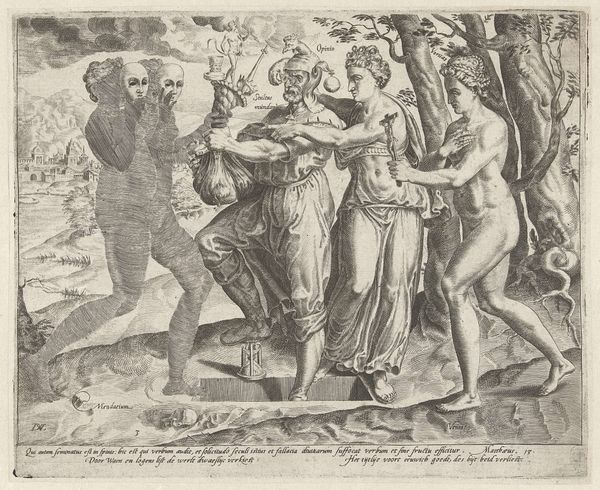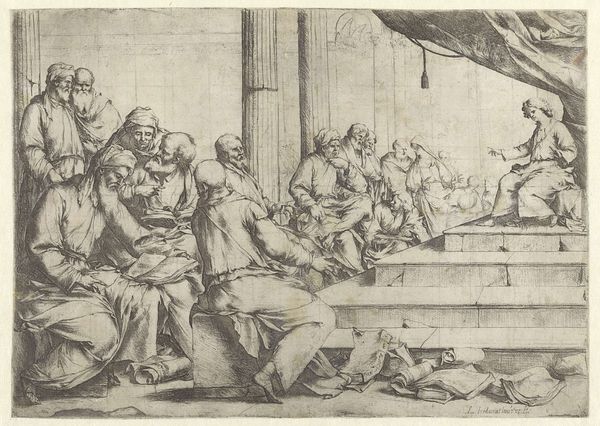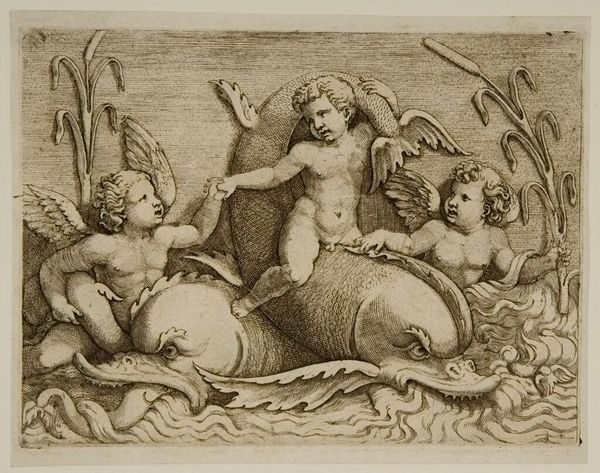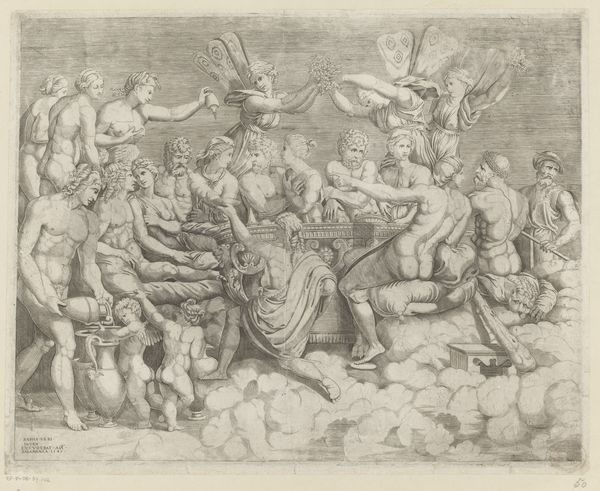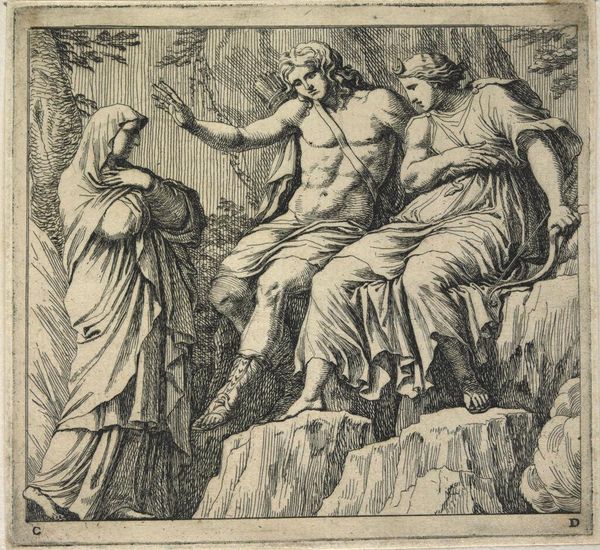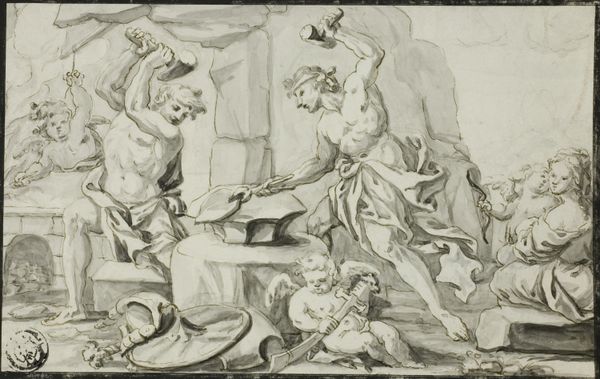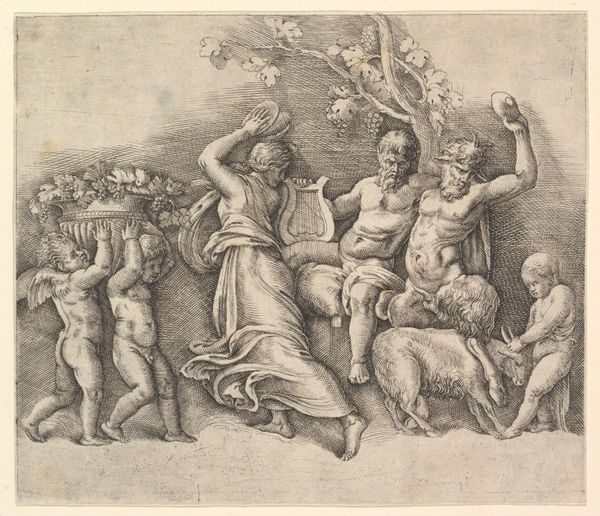
Copyright: CC0 1.0
Editor: So, here we have Marco Dente’s "Laocoon," made sometime in the early 16th century. It’s a detailed engraving of Laocoon and his sons being attacked by serpents. It's so dramatic! What strikes you most about it? Curator: The political implications of Dente’s Laocoon are worth noting. Consider that the original sculpture was unearthed in Rome just a few years prior. How did the rediscovery and subsequent reproduction of this classical sculpture influence the artistic and political climate of the Renaissance? Editor: That’s interesting. I hadn’t thought about the politics of rediscovering classical art. Curator: Exactly. Its display in the Vatican cemented the Pope's power. Dente's print, therefore, democratizes access to this symbol, circulating its message beyond the elite circles of Rome. What do you make of that? Editor: That makes me see the print as a form of cultural commentary, not just a reproduction. Curator: Precisely. Prints like this allowed for wider dissemination of classical ideals, shaping artistic tastes and influencing societal values on a broad scale.
Comments
No comments
Be the first to comment and join the conversation on the ultimate creative platform.
